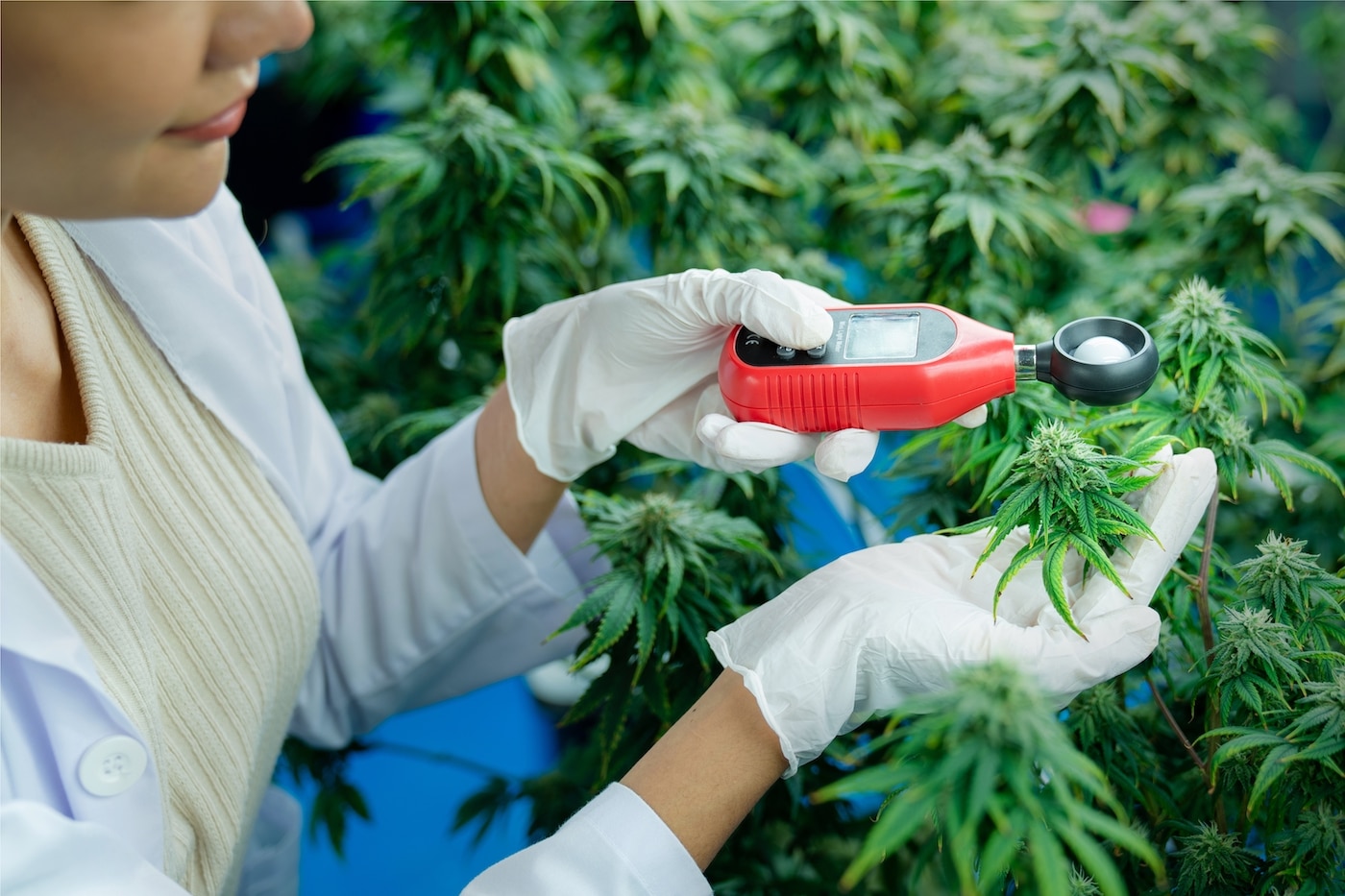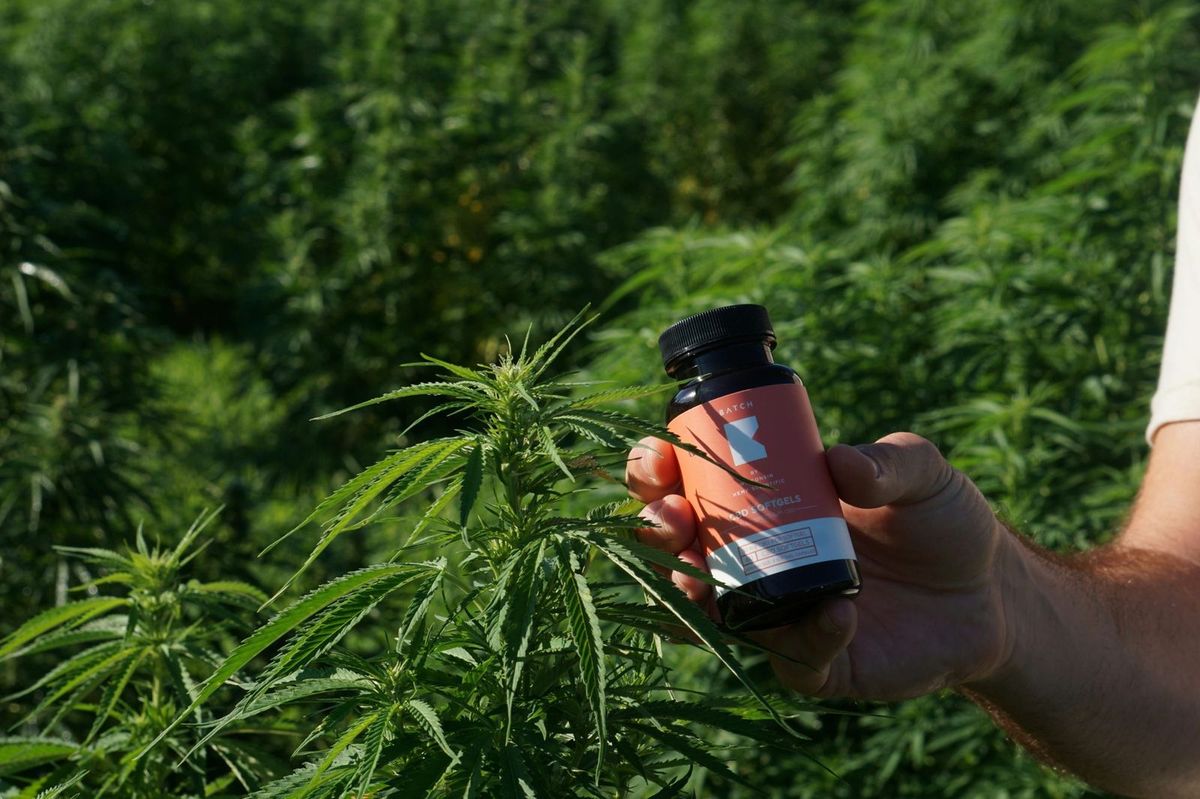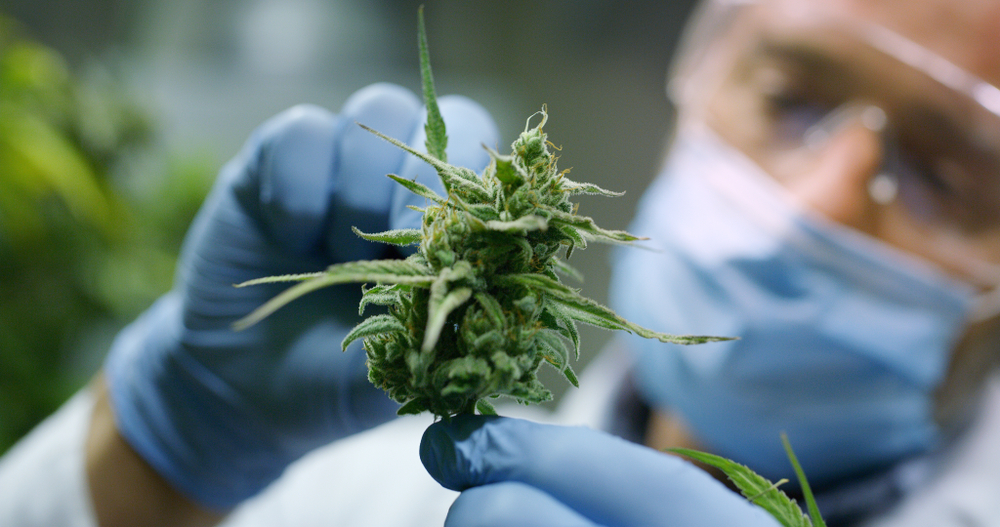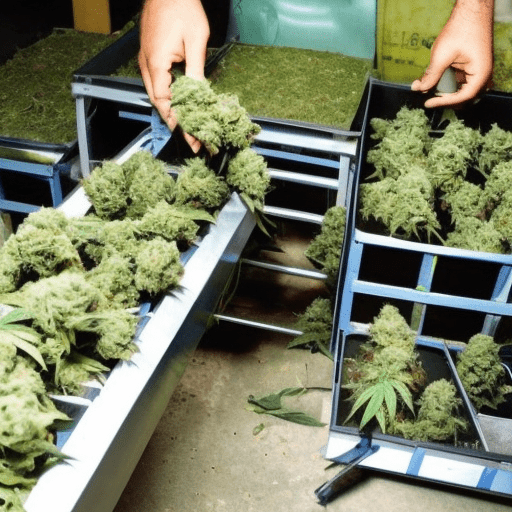Looking to get involved in the cultivation of industrial hemp? Learn the key steps and important factors to consider when cultivating this versatile crop.
Are you ready to unlock the secrets of successful cultivation of industrial hemp, but not sure where to begin? Dive into the world of industrial hemp planting and production with insightful guidance that will help you achieve your goals. This article will provide valuable information to guide you through the process, making it easier to succeed in the cultivation of industrial hemp.
Looking to streamline your cultivation journey, specifically for hemp production? GrowerIQ’s cannabis production software is your ultimate tool. With its user-friendly features, this solution is designed to support your goals and ensure success within the industrial hemp cultivation process.
What Is Industrial Hemp?

Industrial hemp, a type of Cannabis sativa L., embodies a distinct variety of the cannabis plant with minimal THC concentration. This characteristic distinguishes it from its well-known cousins – medical and recreational marijuana. The THC levels in hemp do not exceed 0.3% in any of its parts. As such, it bears a unique status in the cannabis world, serving various purposes without the psychoactive effects caused by higher levels of THC.
Morphological Features of Industrial Hemp
The growth patterns and structure of industrial hemp are fascinating to study. It is an annual crop, completing its lifecycle annually. The plant has separate male and female specimens, displaying dioecious properties. It can tower up to 6 meters high, presenting erect, hollow stems. One distinctive hallmark of hemp is its palmate leaves. The plant produces terpenoids and cannabinoids in its inflorescence. The crop’s sensitivity to photoperiod plays a significant role in its growth cycle.
Historical Overview of Industrial Hemp
Industrial hemp has a long history in the United States, dating back to the mid-18th century. Its cultivation ceased in the mid-1930s due to regulatory changes. The 2018 Farm Bill ushered in a new era for industrial hemp, reintroducing it as a viable crop. This legislation defined hemp as a variety of the plant Cannabis sativa L. with delta-9-tetrahydrocannabinol (∆9 THC) levels of 0.3% or less. The re-emergence of industrial hemp opens up a multitude of possibilities in various industries.
Cultivation Characteristics of Industrial Hemp
The cultivation of industrial hemp is a science in itself. The plant’s dioecious nature means that male and female plants exhibit unique growth patterns. Understanding these characteristics is crucial for successful cultivation. Industrial hemp responds well to elevated CO2 and temperature levels, making it a resilient crop in changing climate scenarios. Industrial hemp boasts water-efficient qualities, making it an environmentally sustainable option for farmers.
Exploring the Potential of Industrial Hemp
The landscape of industrial hemp cultivation is brimming with possibilities. The future looks promising as researchers delve deeper into the plant’s diverse applications. Industrial hemp’s versatile nature opens up avenues in various sectors, from textiles to bioplastics. With the right knowledge and resources, farmers and entrepreneurs can tap into the vast potential of industrial hemp, revolutionizing industries and contributing to sustainable practices.
Uses Of Industrial Hemp

Bast Fiber
Hemp has been cultivated as a bast-fiber crop for centuries, yielding a durable, antimicrobial, and absorbent fiber. Around 14% of the plant is bast fiber, which is used for textiles, rope, cordage, and bioplastics.
Hurd Fiber
The light and dust-free core of the hemp stalk, or hurd fiber, is highly absorbent and ideal for applications such as concrete/hempcrete, animal bedding, fiberglass, and paper.
Hemp Seed
Hemp seeds are rich in plant proteins and essential amino acids, making them a versatile and nutritious ingredient for food products, oil, cheese substitutes, biofuels, livestock feed, oil paint, and plant-based protein.
Hemp Flower
Harvested from unfertilized female plants, hemp flowers contain numerous cannabinoids and terpenes extracted for pharmaceuticals, nutraceuticals, and consumables.
Uncomplicate Your Cannabis Production
Cannabis growers face challenges in managing reporting, documentation, and compliance requirements due to the complexity of regulatory frameworks, evolving legal standards, and the need for accurate record-keeping in a highly regulated industry. At GrowerIQ, our software aims to provide cannabis growers with a comprehensive solution for managing their cultivation operations, ensuring compliance, optimizing quality, enhancing efficiency throughout the seed-to-sale process, and overall simplifying the production process.
We do this with our software, which offers a range of functionalities to assist cannabis growers, including:
-
- Seed-to-Sale Tracking
-
- Quality Management
-
- Cultivation Planning
GrowerIQ provides cannabis growers with a comprehensive solution for managing their cultivation operations, ensuring compliance, optimizing quality, and enhancing efficiency throughout the seed-to-sale process.
Related Reading
Best Practices For The Cultivation Of Industrial Hemp

Field Selection for Industrial Hemp Cultivation
Hemp thrives best in loose, well-aerated loam soil with high fertility, abundant organic matter, and a pH range between 6.0 and 7.5. Well-drained soils are preferred over poorly-drained or heavy-textured soils. Reports indicate seedlings are susceptible to damping-off in less-than-ideal soil conditions, resulting in poor stand establishment. While sandy soils can support hemp growth with ample irrigation and fertilization, it’s essential to consider the additional costs associated with these inputs.
Fertility Requirements for Industrial Hemp Cultivation
Fertilizer requirements for hemp can be determined through a soil test. Recommended nutrient levels for a 1,500-pound/acre grain yield potential include 150 pounds of nitrogen (N), 30 pounds of phosphate (P2O5), and 20 pounds of potash (K2O) in soil with optimal phosphorus (P) and potassium (K) levels. The recommended nutrient levels for hemp grown for fiber at optimum P and K levels are 150 pounds of N, 20 pounds of P2O5, and 20 pounds of K2O per acre.
Planting Strategies for Industrial Hemp
Hemp can be planted in rows like corn or sown with a grain drill like a small grain. The fragile nature of hemp seeds means they can be easily damaged during planting. Currently, no herbicides or pesticides are labeled for hemp use in the US. Consider narrow row planting, high planting density, and tall variety selection to minimize weed competition. Plant hemp in moist soil for optimal germination and stand establishment to out-compete weeds effectively. Planting depth typically ranges from ½ to 1 inch deep, with most recommendations falling within ½ to ¾ inch depth.
Pest Management for Industrial Hemp
Industrial hemp is prone to insect pests like the European corn borer, armyworm, grasshoppers, and plant diseases such as gray and white mold. As hemp acreage increases, pest and pathogen pressure is likely to rise. No pesticides are registered for hemp use, necessitating more research in this area to mitigate potential challenges.
Harvesting Recommendations for Industrial Hemp
For seed production, hemp should be harvested when seeds begin to shatter, with about 70% of seeds ripe and seed moisture ranging from 22% to 30%. Delayed harvesting can increase losses from shattering, bird damage, and grain quality. For fiber production, retting is essential to separate fibers efficiently. After field retting, the stalks should be dried to less than 15% moisture content and baled. Harvesting at the right stage is crucial for CBD production to produce high-quality floral biomass. Growers typically rely on manual labor for CBD harvest, cutting stalks manually with a machete.
Related Reading
Risk Management In Industrial Hemp Cultivation

Agricultural Risks
As industrial hemp farmers, we must prepare for the possibility of losing a portion or all of our harvest. Mother Nature can be unpredictable, and factors such as inclement weather, plant diseases, or insect infestations can threaten our crops. Even the most well-thought-out plans can crumble when faced with such challenges.
Marketing Risk
The industrial hemp market is relatively new and constantly evolving, making it inherently risky. Prices and demand for hemp products are uncertain, and the market is still maturing. It’s crucial to monitor market trends and demand to avoid potential losses.
Legal Risk
Growing industrial hemp comes with legal risks, including the possibility of unknowingly exceeding the THC limit, facing nuisance lawsuits, or encountering crop theft. To mitigate these risks, it’s essential to stay up-to-date with legal regulations and ensure compliance.
Human Risk
Farming is a labor-intensive industry that requires a dedicated team to operate efficiently. Working long hours in adverse conditions increases the risk of accidents. Creating a safe work environment minimizes human risk on the farm.
Regulatory Compliance Risks
Industrial hemp’s legal status doesn’t exempt cultivators from regulatory compliance. Due to the plant’s association with cannabis, the industry operates in a complex regulatory landscape. Ensuring compliance with federal, state, and local regulations requires meticulous record-keeping and attention to detail.
THC testing
The THC content in industrial hemp must remain below the legal limit, which can lead to the destruction of the entire harvest if exceeded. Cultivators must conduct regular testing and closely monitor THC levels to avoid regulatory penalties.
Financial Risks
Equipment costs
Harvesting and processing industrial hemp require specialized machinery, which can be expensive to purchase and maintain. Breakdowns or replacements can significantly impact a hemp business’s bottom line.
Property damage
Due to misconceptions about hemp and marijuana, industrial hemp businesses may face theft, vandalism, or natural disasters that can damage crops and property. Insuring against such risks is crucial to safeguarding the business’s financial health.
Regulatory Compliance With Production And Harvest

Licensing, Testing, and Compliance
Farmers must obtain a license under their state’s guidelines to ensure compliance with regulations and have their crops tested for ∆9 THC concentration within 30 days before harvesting. The use of a licensed testing facility is mandatory, and states and tribes provide guidelines for disposing of non-compliant crops.
Harvest Timing
The 30-day harvest window starts at the final regulatory test for compliance. This timeframe can pose challenges due to the labor-intensive process of harvesting and drying the dense and moist hemp crop.
Genetics
Selecting the right genetics is crucial, especially when adhering to the federal THC threshold of .3%. Grain and fiber producers have it easier, given the existence of certified varieties. Cannabinoid producers face a tougher challenge in sourcing stable varieties, given the limited genetic research in this area.
Market Challenges
Navigating the regulatory environment for industrial hemp is challenging due to dual oversight by States, Tribes, and the federal government. The evolving federal cannabis status also affects regulatory clarity. Misconceptions among law enforcement and local jurisdictions further complicate matters for producers.
Local Ordinances
Checking for state and local ordinances is vital, as some areas prohibit hemp production to prevent cross-pollination with medical or recreational cannabis crops. Awareness of local regulations is as crucial as understanding state and federal guidelines.
Related Reading
Uncomplicate Your Cannabis Production Today!
Seed-to-Sale Tracking
At GrowerIQ, we understand that comprehensive seed-to-sale tracking is essential for a successful cannabis cultivation operation. Our software monitors the entire production process, from seed to final sale. This functionality is crucial for complying with regulatory standards in the cannabis industry. This feature allows growers to manage different phases of the cultivation process with ease and accuracy. This tool ensures that all plants are accounted for, from when they are planted to when they are sold or destroyed.
Quality Management
Quality management is a critical aspect of cannabis production. At GrowerIQ, we offer quality management tools to help growers monitor the quality of their products effectively. Our software allows for creating quality control measures that can be implemented throughout the cultivation process. This ensures that the best practices are followed, resulting in a high-quality end product. Our software is designed to help growers maintain consistency in the quality of their products and meet the high standards demanded by the cannabis market.
Cultivation Planning
Cultivation planning is a feature offered by GrowerIQ that allows growers to create detailed cultivation plans for their operations. This tool helps growers maximize resources, plan cultivation cycles, and optimize production. Cultivation planning is vital for increasing efficiency and ensuring that all aspects of the cultivation process are well-managed and organized. With this tool, growers can create effective cultivation strategies to help them achieve their production goals.
Streamline Cannabis Cultivation
Recommended For You
Cannabis Rescheduling to Schedule III: Complete 2025 Business Guide
December 18, 2025Battle of the Buds: Crafting a Green Revolution Against Thrips on Cannabis Plants
December 18, 2025Chaotic Harmony: How Modern Supply Chain Production Planning Redefines Efficiency in a Turbulent World
December 17, 2025About GrowerIQ
GrowerIQ is changing the way producers use software - transforming a regulatory requirement into a robust platform to learn, analyze, and improve performance.
To find out more about GrowerIQ and how we can help, fill out the form to the right, start a chat, or contact us.

